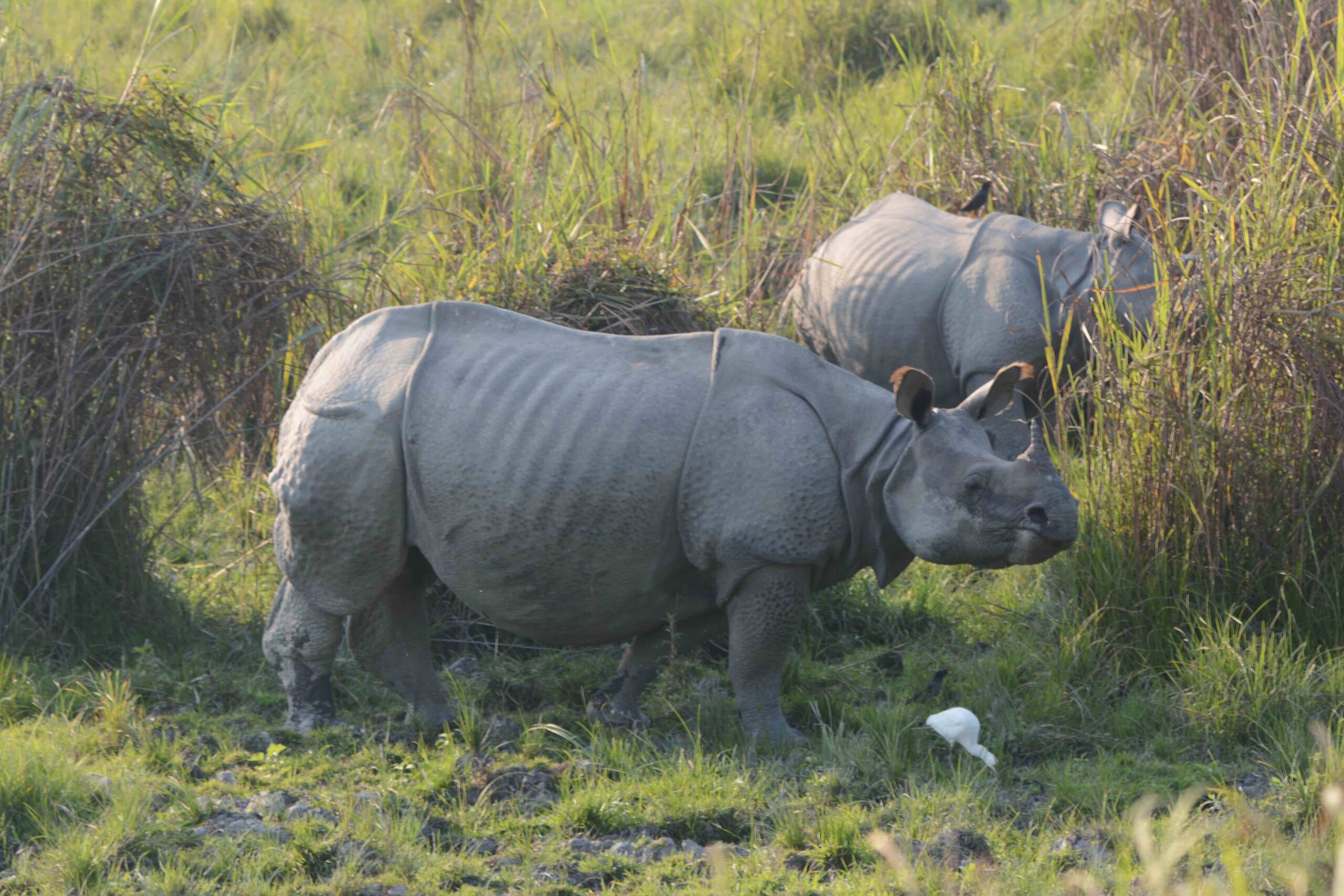
The Mighty Rhino : An Introduction to the World’s Second-Largest Land Animal”
Introduction :
The rhinoceros, also known as the rhino, is one of the most iconic animals on the planet. It is the second-largest land animal in the world, with only the elephant being bigger. Rhinos are known for their large size, thick skin, and impressive horns. They are fascinating creatures that have captured the imagination of people for centuries.
There are five species of rhinoceros: the black rhino, white rhino, Indian rhino, Javan rhino, and Sumatran rhino. Unfortunately, all five species are threatened with extinction due to poaching, habitat loss, and other human activities.
In this topic, we will explore the world of the mighty rhino, its behavior, ecology, conservation status, and the various issues related to its survival. We will also examine the different species of rhinos, their physical characteristics, and their habitats.
Five species of Rhinoceros:
- Black Rhino: The black rhino is found in eastern and southern Africa. It has a hooked lip that allows it to feed on trees and bushes, and it is known for its aggressive behavior when threatened. Unfortunately, black rhinos are critically endangered due to poaching for their horns.
- White Rhino: The white rhino is also found in eastern and southern Africa. It has a square lip that allows it to graze on grass, and it is the largest species of rhino. Contrary to its name, the white rhino is not actually white, but is instead a grayish color. The white rhino is also endangered due to poaching.
- Indian Rhino: The Indian rhino is found in northeastern India and Nepal. It has a single horn and a folded upper lip that allows it to feed on grass. The Indian rhino is the second-largest species of rhino and is listed as vulnerable.
- Javan Rhino: The Javan rhino is found in Indonesia and is one of the rarest large mammals in the world. It has a single horn and a prehensile lip that allows it to grasp vegetation. The Javan rhino is critically endangered with only a few dozen individuals remaining.
- Sumatran Rhino: The Sumatran rhino is found in Indonesia and Malaysia. It is the smallest species of rhino and has two horns. The Sumatran rhino is critically endangered, with only a few dozen individuals remaining in the wild.
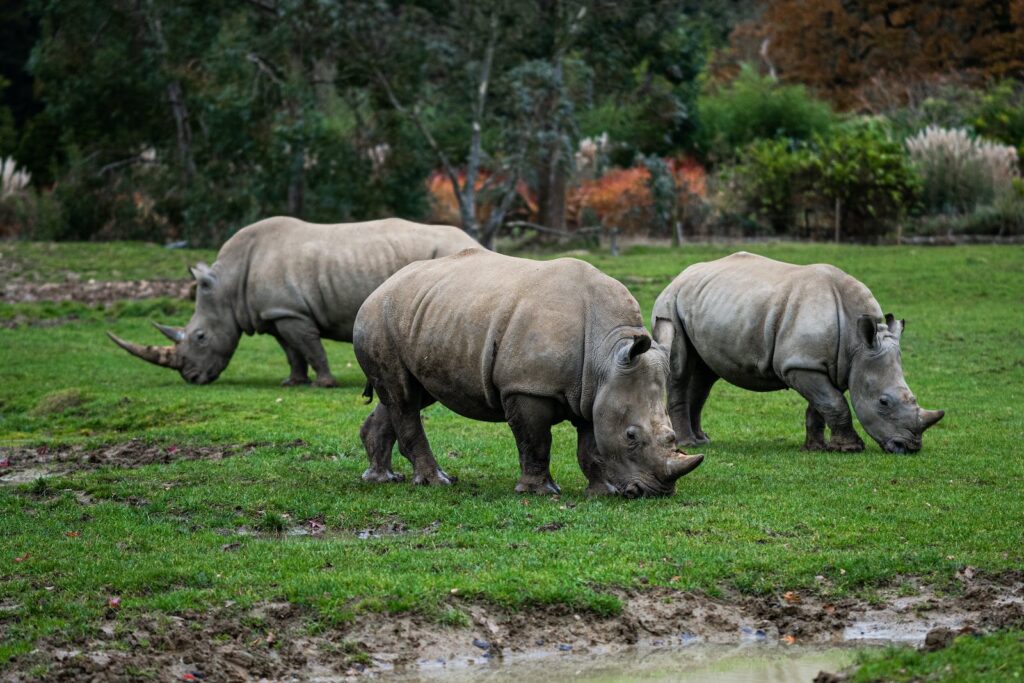
Physical characteristics and their Habitats:
Rhinoceros are large, powerful animals with distinct physical characteristics that vary between the different species. Here are some of the physical characteristics and habitats of rhinos:
- Size and weight: Rhinos are large animals, with males usually being larger than females. They can weigh anywhere from 800 pounds (360 kg) for the smallest Sumatran rhino to over 5,000 pounds (2,300 kg) for the largest white rhino.
- Skin: Rhinos have thick, armor-like skin that can be up to 1.5 inches (4 cm) thick. This skin provides protection from predators and helps regulate their body temperature.
- Horns: Rhinos have one or two horns made of keratin, the same material as human hair and nails. The length and shape of the horns vary between species, with some rhinos having straight horns while others have curved ones.
- Habitat : Rhinos are found in a variety of habitats, including grasslands, savannas, and forests. The specific habitat of each species depends on its range, with some species being found in specific regions such as the Indian rhino in the grasslands and swamps of India and Nepal.
- Adaptations: Rhinos have several adaptations that allow them to thrive in their habitats. These include a keen sense of smell, excellent hearing, and the ability to run at speeds of up to 35 miles (56 km) per hour.
- Conservation status: All five species of rhino are threatened with extinction due to poaching and habitat loss. Conservation efforts are underway to protect these magnificent animals and ensure their survival.
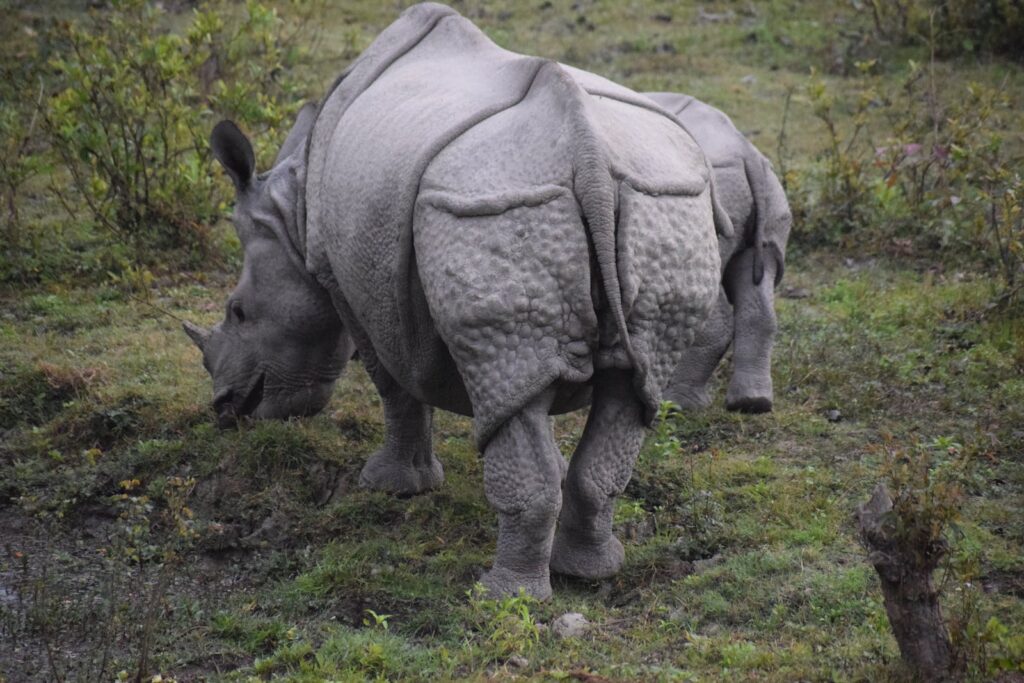
Let’s talk about behavior of rhinoceros:
Rhinoceros are fascinating animals with unique behaviors that have evolved over millions of years of adaptation to their habitats. Here are some key behavioral characteristics of rhinos:
- Solitary animals: Rhinos are mostly solitary animals, with the exception of mothers and calves. They prefer to live alone and only come together during the mating season.
- Territorial: Rhinos are very territorial animals and mark their territories with urine, dung, and scraping the ground with their feet. They are known to charge at any perceived threat, including other animals and humans.
- Vocal communication: Rhinos communicate through a variety of vocalizations, including grunts, snorts, and honks. They also use body language such as ear and tail position to communicate with each other.
- Active at night: Rhinos are primarily active at night and rest during the day in shaded areas. This behavior helps them avoid the heat of the day and potential predators.
- Herbivorous: Rhinos are herbivorous animals and feed on grasses, leaves, shoots, and fruits. They have a very strong sense of smell and use it to locate their food.
- Social grooming: Rhinos will often engage in social grooming, which involves rubbing their bodies against each other or licking each other’s skin. This behavior helps to establish and reinforce social bonds.
- Aggression: When threatened, rhinos can become extremely aggressive and charge at their perceived threat. They use their horns as weapons and are capable of causing serious injury or death to other animals or humans.
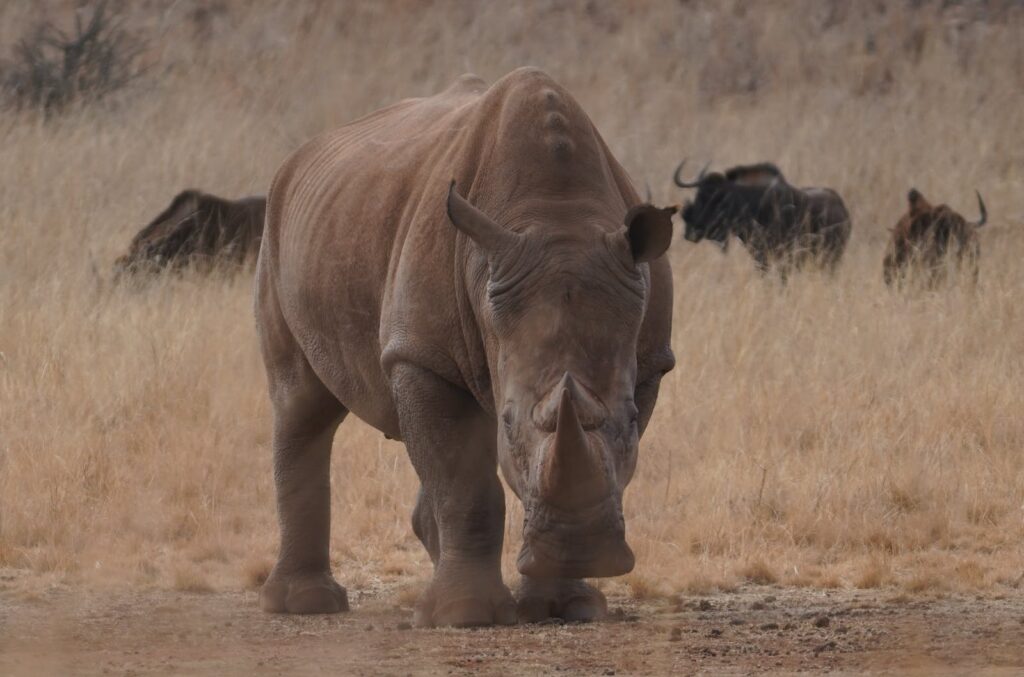
Ecology
Rhinos play a crucial role in their ecosystems and have a significant impact on the plants and animals around them.
- Seed dispersal: Rhinos feed on a variety of plants and fruits and help to disperse seeds in their dung. This process helps to maintain plant diversity and plays a critical role in the ecosystem.
- Grazing: Rhinos are herbivores and help to control plant growth by grazing on grasses and other vegetation. This process helps to prevent overgrowth and maintains a healthy balance in the ecosystem.
- Habitat creation: Rhinos play a significant role in creating habitats for other animals by shaping their surroundings. Their grazing and browsing behavior helps to create open grasslands, which are crucial habitats for many other animals.
- Prey for predators: Rhinos are also prey for predators such as lions and hyenas. By being a part of the food chain, rhinos contribute to the balance of predator-prey relationships in their ecosystem.
- Nutrient cycling: Rhinos help to cycle nutrients through their dung and urine, which helps to fertilize the soil and support plant growth. This process is crucial for maintaining healthy ecosystems.
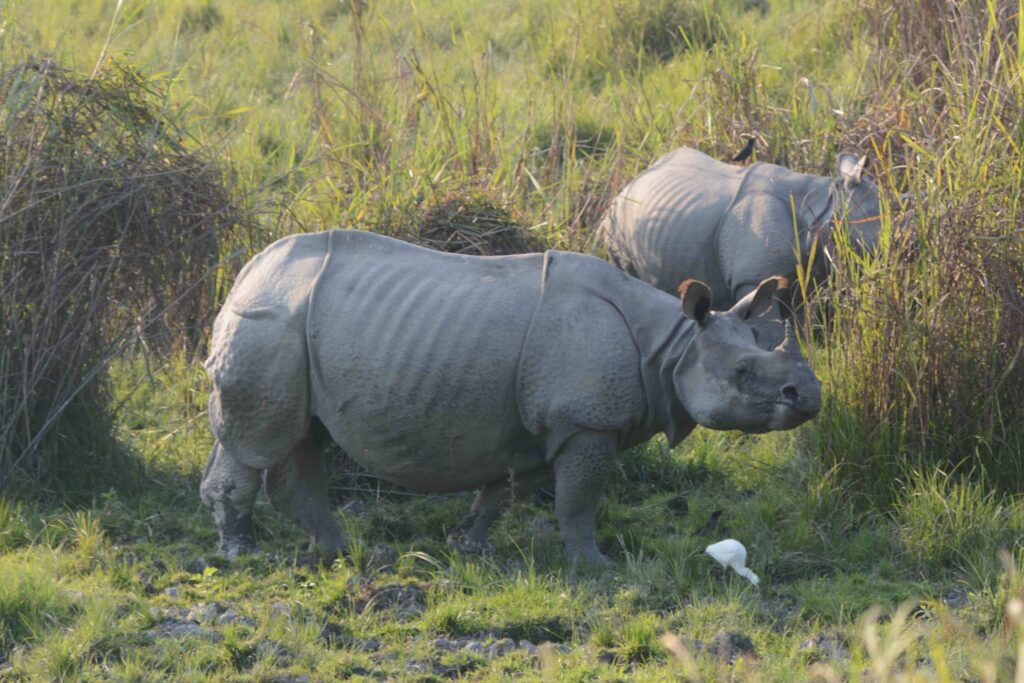
Various issues related to it’s Survival:
Rhinos face several threats to their survival, both natural and human-induced. Here are some of the major issues related to their survival:
- Poaching: Poaching for their horns is the biggest threat to rhino survival. Rhino horns are highly valued in traditional medicine and as a status symbol in some cultures. Despite a ban on the international trade in rhino horn, poaching continues to be a significant problem.
- Habitat loss : Habitat loss due to human activities such as agriculture, mining, and urbanization is a significant threat to rhino populations. As their habitats shrink, rhinos are forced to compete for resources with humans, and their populations decline.
- Climate change : Climate change is affecting rhino habitats, leading to changes in rainfall patterns and the availability of water and food. This can lead to declines in rhino populations due to the effects of drought, floods, and other climate-related disasters.
- Inbreeding: Rhino populations that are isolated from each other can suffer from inbreeding, which can lead to genetic problems and reduced fitness. This is a particular problem for small populations of rhinos, such as the Javan rhino, which has a population of less than 100 individuals.
- Human-wildlife conflict: As human populations grow, conflicts between humans and rhinos can occur. Rhinos may damage crops or pose a threat to human safety, leading to retaliation from local communities.
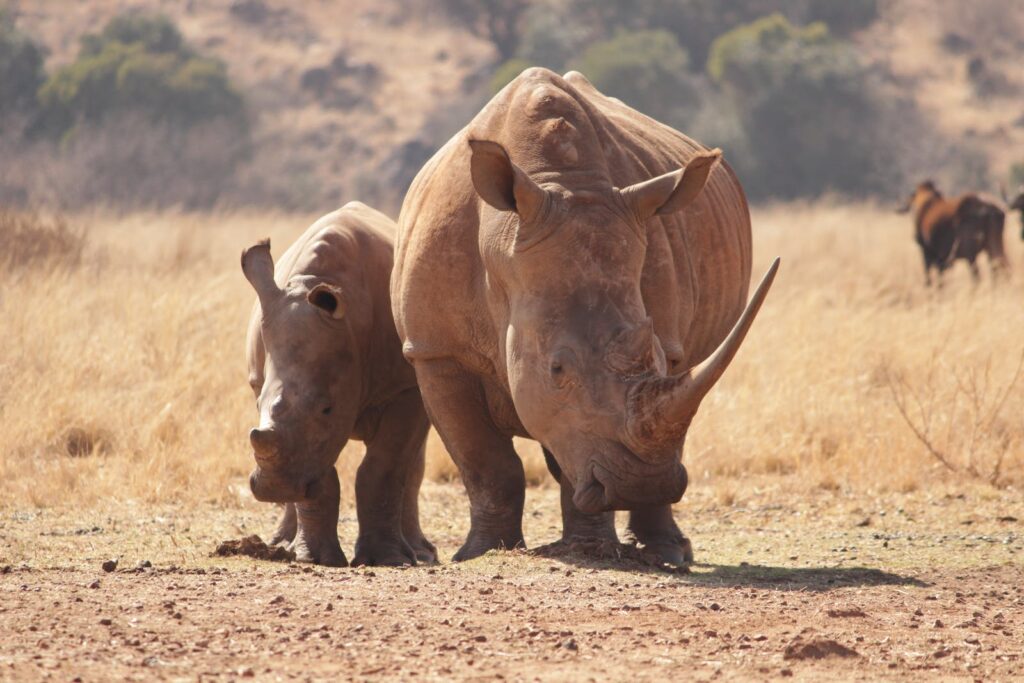
Population of rhino’s worldwide (2022):
According to the latest data from the International Union for Conservation of Nature (IUCN), there are approximately 26,274 rhinos left in the wild worldwide. This is a decline from an estimated 500,000 rhinos in the early 20th century. The five species of rhinos and their estimated populations are:
- White rhino: There are two subspecies of white rhinos, the southern and northern white rhino. The southern white rhino population is estimated to be around 15,942 individuals, while only two northern white rhinos remain.
- Black rhino: The black rhino population is estimated to be around 6,195 individuals, with the majority found in southern and eastern Africa.
- Indian rhino: The Indian rhino population is estimated to be around 4,014 individuals, with the majority found in India and Nepal.
- Javan rhino: The Javan rhino population is estimated to be around 76 individuals, making it one of the most endangered large mammals in the world.
- Sumatran rhino: The Sumatran rhino population is estimated to be around 34-47 individuals, making it one of the most critically endangered rhino species.
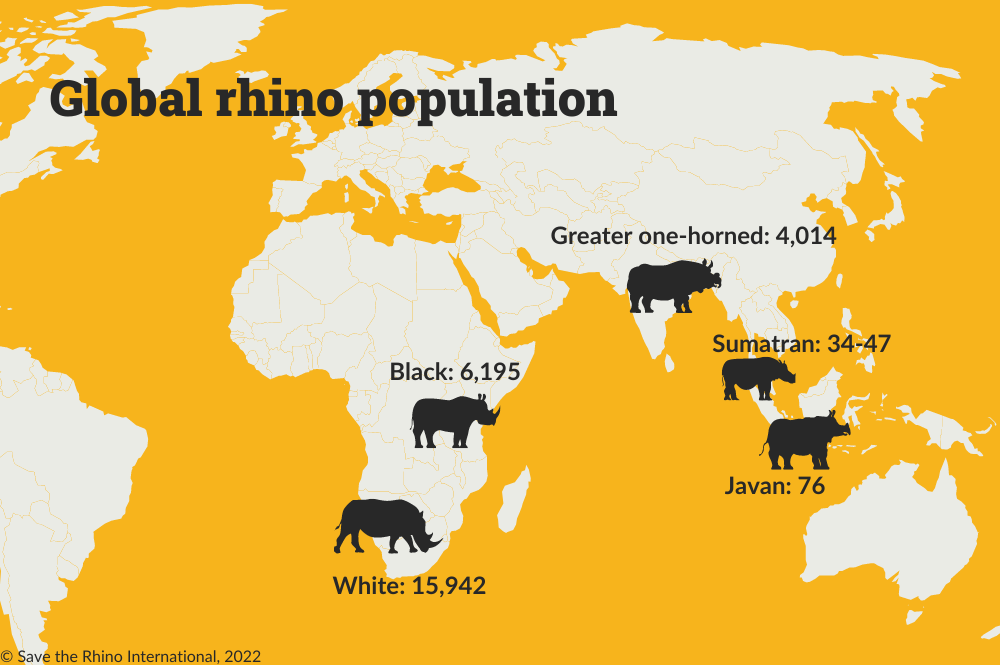
Conservation efforts
Conservation efforts are crucial for ensuring the survival of rhinos. Here are some of the major conservation efforts in place:
- Anti-poaching measures: One of the most significant threats to rhino survival is poaching for their horns. Anti-poaching measures, such as increased law enforcement, use of technology such as drones, and community engagement, are critical for protecting rhinos from poachers.
- Habitat protection and restoration : Protecting and restoring rhino habitats is crucial for their long-term survival. This involves measures such as establishing protected areas, reforestation, and managing grazing to maintain healthy ecosystems.
- Translocation and reintroduction: Translocation and reintroduction of rhinos to new areas can help to establish new populations and increase genetic diversity. This involves carefully selecting suitable habitats and ensuring that the rhinos have adequate protection and resources.
- Captive breeding: Captive breeding programs can help to establish captive populations of rhinos, which can be used for research, reintroduction, and education. This can also provide a safety net in case wild populations decline further.
- Community engagement: Engaging with local communities and providing alternative livelihoods can help to reduce human-wildlife conflict and support conservation efforts. This can include measures such as ecotourism, sustainable agriculture, and education programs.
Conservation efforts require the collaboration and support of governments, conservation organizations, local communities, and individuals. By working together, we can help to ensure the survival of rhinos and protect these magnificent animals for future generations.
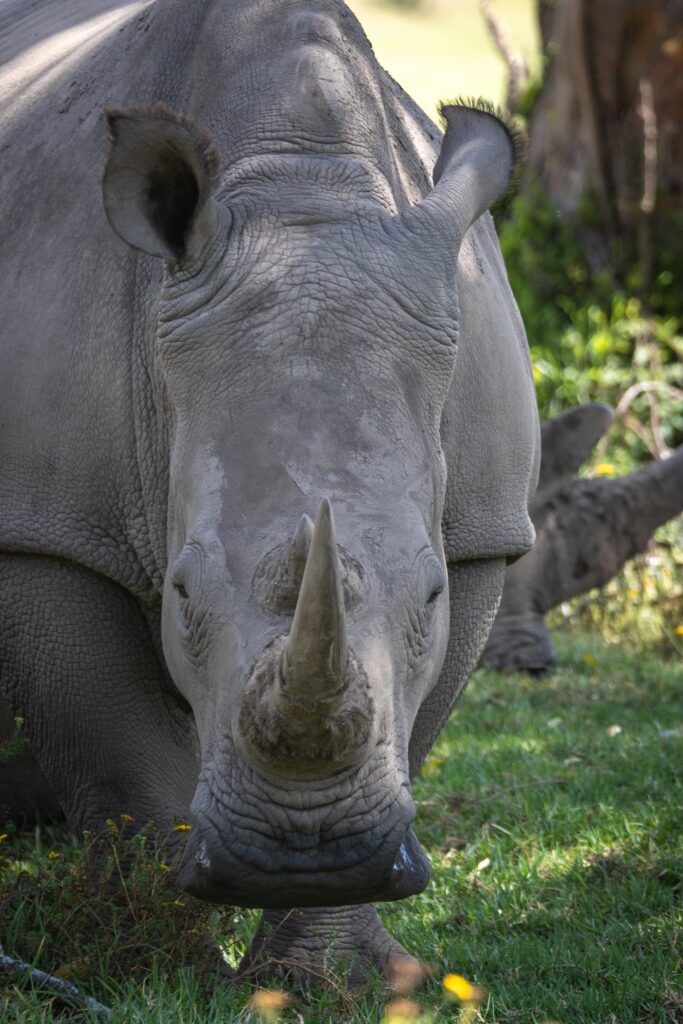
2 thoughts on “The Mighty Rhino : An Introduction to the World’s Second-Largest Land Animal””
Thanks for finally writing about > The Mighty Rhino :
An Introduction to the World's Second-Largest Land
Animal" – My wildlife world < Liked it!
I was reading through some of your blog posts on this site and I conceive this site is rattling informative!
Continue posting.Raise range